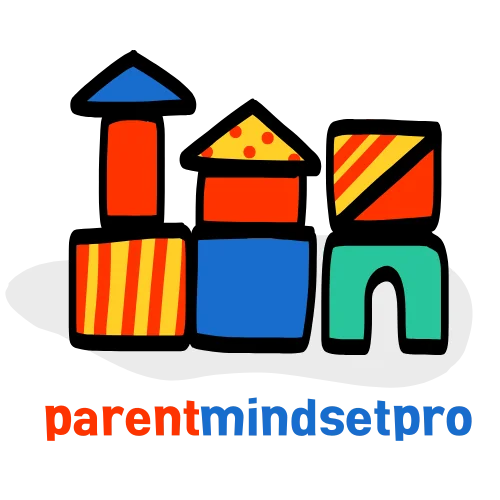In a world where kids are glued to screens, it’s time to swap the latest video game for something that sparks curiosity and creativity. Enter STEM books for kids—the magical gateway to science, technology, engineering, and math. These aren’t just any books; they’re adventure-packed stories that turn young readers into future inventors, problem solvers, and maybe even the next Einstein.
Imagine a child flipping through pages filled with colorful illustrations and brain-teasing puzzles, all while learning the wonders of the universe. STEM books make learning fun, engaging, and downright exciting. They’re the secret sauce to nurturing a love for knowledge that could lead to groundbreaking discoveries. So let’s dive into the world of STEM literature and discover how these books can inspire the next generation of thinkers and doers.
Table of Contents
ToggleImportance Of STEM Books For Kids
STEM books play a significant role in early education. They stimulate curiosity and creativity in young minds. Engaging narratives encourage children to ask questions and explore new ideas. Adventure-filled stories expose kids to concepts in science, technology, engineering, and mathematics. Reading these books makes learning enjoyable, leading to a deeper understanding of the world around them.
Colorful illustrations capture attention and ignite imagination. Puzzles and interactive elements enhance critical thinking skills. These factors help children develop problem-solving abilities essential for future challenges. Studies show that early exposure to STEM concepts can lead to improved academic performance, fostering a lifelong interest in these fields.
Also, STEM literature promotes teamwork and collaboration. Many books feature characters solving problems together, teaching kids the value of working with others. This sharing of ideas can spark creativity, inspiring children to invent and innovate.
A solid foundation in STEM during childhood can shape future inventors and leaders. By encouraging exploration and experimentation, STEM books create a generation of thinkers ready to tackle real-world challenges. Parents and educators can utilize these resources to nurture a passion for learning, positioning children for success in various careers.
Investing in diverse STEM literature is crucial. Access to a variety of topics ensures that every child finds something that resonates with them. These books not only entertain but also equip young readers with essential skills for their academic journey and beyond.
Top STEM Books For Kids

STEM books provide a gateway to exploration and learning for young minds. They come in various formats, each catering to different age groups and interests.
Picture Books
Picture books introduce STEM concepts with vibrant illustrations and simple narratives. Titles like Rosie Revere, Engineer engage children through storytelling, allowing them to see how creativity and engineering intertwine. Books such as The Most Magnificent Thing encourage problem-solving skills, showcasing persistence while engaging visually. These reads captivate children’s imaginations, stimulating their interest in science and technology from an early age.
Chapter Books
Chapter books dive deeper into STEM themes, making learning both entertaining and educational. Series like The Whatever After offer magical adventures while subtly incorporating math and science principles. Titles such as Ada Twist, Scientist inspire curiosity, featuring characters who ask questions and solve mysteries. Engaging plots and relatable characters encourage readers to explore STEM concepts further, linking storytelling with real-world applications.
Non-Fiction
Non-fiction books provide factual information about STEM topics, sparking curiosity in young readers. Titles like Women in Science: 50 Fearless Pioneers Who Changed the World highlight the contributions of women in STEM fields. Other books, such as The Way Things Work Now, simplify complex mechanisms and scientific principles. These resources enhance knowledge and encourage exploration, making difficult concepts more accessible and enjoyable.
How To Choose The Right STEM Book
Selecting the right STEM book is essential for engaging children and fostering a passion for learning. Consider the following factors to ensure the chosen book aligns with the child’s interests and developmental stage.
Age Appropriateness
Age appropriateness plays a crucial role when selecting STEM books. Books for toddlers to preschoolers should feature simple concepts and vibrant illustrations. For early elementary students, stories may introduce more complex themes while maintaining engaging narratives. Later elementary books often explore subjects in greater depth, intertwining storytelling with scientific principles. Each age group requires different levels of language complexity and concept sophistication, ensuring kids grasp ideas effectively.
Content Relevance
Content relevance is significant for maintaining children’s interest in STEM subjects. Look for books that align with the child’s interests—whether science, engineering, mathematics, or technology. Non-fiction titles should provide accurate information while being engaging and relatable. Fictional stories can incorporate real-world applications of STEM concepts, helping children connect themes to everyday life. Selecting books that resonate with the child’s current curiosities will encourage exploration and critical thinking. That way, learning becomes an enjoyable experience rather than a chore.
Benefits Of Reading STEM Books
Reading STEM books offers numerous advantages for children. These benefits include fostering a sense of curiosity and enhancing critical thinking abilities, both essential for academic success.
Encouraging Curiosity
STEM books ignite curiosity through captivating stories that introduce scientific concepts. Each tale invites children to explore the wonders of the world around them. Bright illustrations complement engaging narratives, sparking interest in various STEM fields. Readers encounter intriguing characters who tackle real-world challenges, prompting kids to ask questions and seek answers. The exposure to different ideas makes these books perfect for nurturing inquisitive minds. Ultimately, a child’s natural curiosity grows, leading to a lifelong love for learning.
Building Critical Thinking Skills
Critical thinking skills develop as children engage with STEM literature. Interactive elements often challenge readers to solve puzzles or predict outcomes. Each problem presented encourages analysis and reasoning, fostering a proactive approach to learning. Stories frequently feature teamwork, illustrating how collaboration enhances problem-solving abilities. Readers become adept at thinking analytically, applying lessons from narratives to real-life scenarios. With consistent exposure to these thought-provoking challenges, children strengthen their decision-making skills, preparing them for future academic and career pursuits.
STEM books for kids are more than just stories; they’re gateways to a world of exploration and innovation. By integrating captivating narratives with educational content, these books inspire young minds to think critically and creatively. The diverse range of formats ensures that every child can find something that sparks their interest.
Investing in STEM literature not only enhances academic performance but also cultivates a lifelong passion for learning. As children engage with these books, they develop essential skills that prepare them for future challenges. Encouraging a love for STEM from an early age can lead to the next generation of inventors and problem solvers ready to make their mark on the world.
